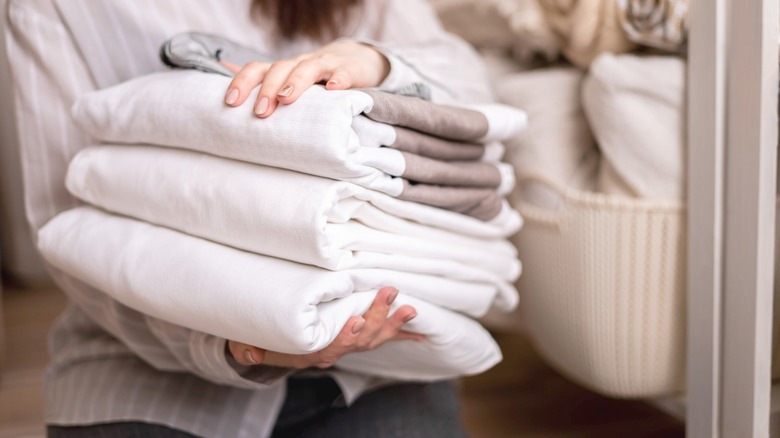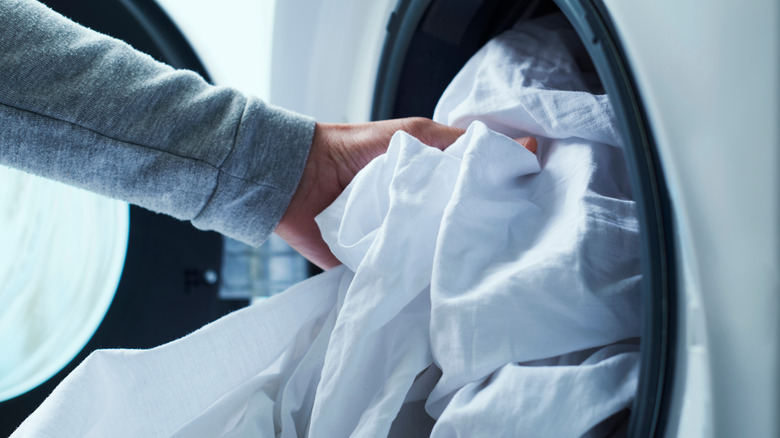Should You Launder New Bedding Before Putting It On Your Bed?
Should you launder new bedding before using it? Yes, and even bedding brands say so. While those pristine, wrinkle-free sheets and cushy comforter may look cool and crisp coming out of the packaging, there are a few reasons why you should reconsider taking such bedding directly from the shelves in stores to on your bed. From allergens and chemicals to dirt and germs, laundering new bedding before you use it, ultimately can protect you, by ensuring that these invisible hazards are washed away.
And that's a good thing to remember when it comes to buying new bedding from a store: You can't always see what's in plain sight. Did you know, for instance, that some manufacturers use the chemical formaldehyde to achieve a "wrinkle-free" finish? It's true, and perhaps now knowing this, it makes laundering new bedding before putting it on your bed seem less like an extra laundry step and more like a must-do for the safety of those in your household.
Reasons to launder new bedding
In addition to chemicals, another reason to wash new bedding before letting it cover your bed is the possible presence of excess dye, which, for some people, could lead to an allergic reaction. According to a study published in the American Journal of Contact Dermatitis, allergic reactions to textile dyes are more common than you may think, though cases tend to be underreported. Washing new bedding before using it can help to remove this dye buildup.
And what of dirt and germs? Consider the sheer number of people touching the fabric of your bedding and the perhaps less-than-pristine conditions in the manufacturing plant, not to mention the weeks of storage in a transportation container or warehouse. Neither location is guaranteed to be free of bugs, germs, and dust, so an initial wash of new bedding in such cases would naturally make sense as well.
The one possible exception to the guidelines of washing bedding before use is if you've splurged on a goose- or duck-down duvet. Many makers of this type of feather-filled bedding recommend having a dry-cleaning service professionally launder it.
Tips for washing new bedding
For new bedding, start your care assessment with the type of fabric the bedding is made from. Cotton sheets, for example, are washed in hot water, while more delicate silk or satin sheets should be washed in cold. Also, keep an eye on the labels on your bedding and the instructions for your washer (note, many machines today have a sheets setting). Next, decide on the best detergent for you and your family. Dye- and perfume-free detergents are available on the market, and this might be best for laundering bedding, even if you use something else for clothing or workout wear.
The manufacturers making washing machines and bedding agree that sheets should be a separate load, so don't mix in towels or clothes. Also, don't overstuff the washing machine or dryer since that makes the machines less efficient. Tumble-dry sheets, comforters, and/or blankets with the proper setting, usually gentle and on the lowest heat, but, again, check the care label. Finally, to keep your bed as chemical-free as possible, avoid using fabric softeners or dryer sheets. Opt instead for natural softeners like felted wool balls.


